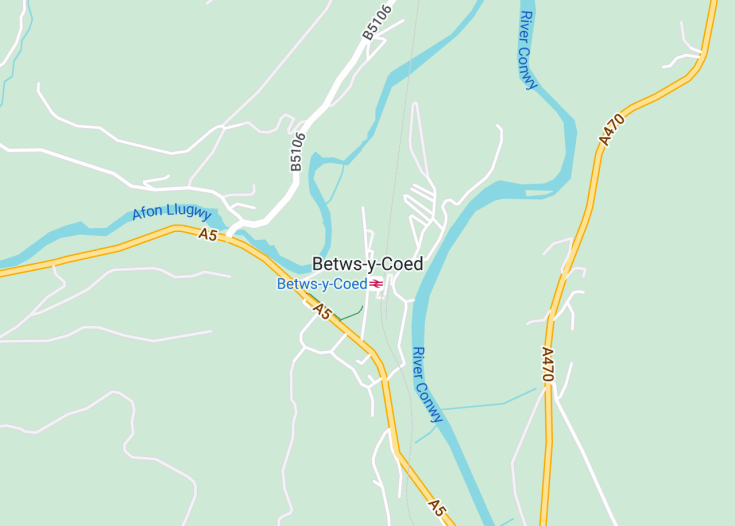Nestled in the heart of Snowdonia National Park, Betws-y-Coed is a picturesque village in Wales known for its natural scenery and Welsh culture. This charming destination is a gateway to outdoor adventures, with numerous hiking trails, cascading waterfalls, and ancient wooded landscapes. Betws-y-Coed also offers a rich history, evident in its traditional stone buildings and the historic Pont-y-Pair Bridge. Ideal for nature lovers, photographers, and history enthusiasts alike, it provides a serene escape with breathtaking views and a peaceful atmosphere.
For the best experience, visit during the spring or early autumn to enjoy mild weather and fewer crowds, perfect for exploring the natural beauty uninterrupted.
Pack comfortable hiking shoes and a waterproof jacket to fully enjoy the countless walking trails and outdoor activities that Betws-y-Coed offers, regardless of the weather.
Top things to do & see in Betws-y-Coed
Select the following sights and activities to discover best tickets and tours available in Betws-y-Coed.
Betws-y-Coed: The Heart of Snowdonia
| Country | Wales (United Kingdom) |
| Time in Betws-y-Coed | GMT+0 |
| Language spoken | English and Welsh |
| Population | 564 (source: latest census data) |
| Currency | Pound Sterling (£, GBP) |
| Airports |
|
Betws-y-Coed is a quaint village in Conwy, North Wales, nestled in the lush, green valleys of Snowdonia National Park. Renowned for its stunning natural beauty, the village serves not only as a scenic retreat but also as a hub for outdoor activities including hiking, biking, and climbing. The area around Betws-y-Coed is rich in Welsh culture and history, peppered with historic sites, castles, and bridges unlike anywhere else in the world.
The village’s name, Betws-y-Coed, means “Prayer house in the woods” in Welsh, and it truly lives up to its name with its fairytale woodland surroundings and serene atmosphere. With its origins dating back to the 6th century as a monastic settlement, Betws-y-Coed is steeped in history. The village was a significant crossing point over the River Conwy and has been a magnet for artists and travelers enchanted by its natural beauty since the Victorian era.
Visitors to Betws-y-Coed will find a variety of attractions to explore, such as the local Church of St. Michael, which dates back to the 14th century. The nearby Fairy Glen – a secluded and enchanting gorge – is another must-see. Swallow Falls, situated a few miles west of the village, offers breathtaking views of waterfalls cascading through the rugged woodland.
Beyond its scenic landscape and cultural sites, Betws-y-Coed offers an array of local artisan shops and traditional Welsh pubs and cafes, providing visitors with a taste of local cuisine and an opportunity to purchase unique, handcrafted Welsh products. Seasonal events, like the Betws-y-Coed Marathon and various cultural festivals, add to the vibrant community spirit and draw visitors from all over the UK and beyond.
Whether it’s the call of the lush greenery, the rich history, or the active outdoors lifestyle, Betws-y-Coed offers something for every visitor, making it a jewel in the crown of North Wales.
Where is Betws-y-Coed?
Located in the Conwy valley, Betws-y-Coed is set within the Snowdonia National Park in North Wales, known for its rugged landscapes and picturesque views.
Distances:
| Route | Distance by car | Time by car |
|---|---|---|
| From Cardiff | 186 miles | Approx. 4 hours 10 minutes |
| From Swansea | 160 miles | Approx. 4 hours |
| From Chester | 53 miles | Approx. 1 hour 20 minutes |
What is Betws-y-Coed famous for?
Betws-y-Coed is renowned for its picturesque setting within Snowdonia National Park, a haven for nature lovers and outdoor enthusiasts. It’s famous for its rich history, breathtaking scenery, and as a center for outdoor recreational activities.
History
Betws-y-Coed, located in the heart of Snowdonia National Park in Wales, United Kingdom, boasts a rich tapestry of history that dates back centuries. This charming village is not only a hub for outdoor activities but also a capsule of historical milestones.
Pre-19th Century
The area around Betws-y-Coed has been inhabited since the Bronze Age, evidence of which can still be seen in the form of standing stones and burial chambers scattered around the region. By the medieval period, it became part of the ancient royal hunting ground of Gwydir Forest, controlled by the Princes of Gwynedd. The name ‘Betws-y-Coed’ itself means ‘Prayer house in the wood’, attributed to the 14th-century St. Michael’s Church, originally a chapel of ease for the surrounding farming communities.
19th Century: The Arrival of the Artists
The picturesque landscapes of Betws-y-Coed drew the attention of artists in the 19th century. It became a significant point on the map for the artists of the ‘British Landscape Movement’. The establishment of the Waterloo Bridge in 1815, designed by the famous Thomas Telford, marked a turning point, making the village more accessible and increasingly popular as a tourist destination. The arrival of the railway in 1868 further boosted visitors and cemented Betws-y-Coed’s reputation as a scenic retreat.
20th Century to Present
The 20th century saw Betws-y-Coed evolve into a haven for hikers, climbers, and nature lovers, drawn by its proximity to the highest peaks in Wales, including Snowdon. The village adapted to cater to these outdoor enthusiasts with numerous shops, hotels, and services. Today, Betws-y-Coed continues to thrive as a destination for tourism and recreation, balancing modern amenities with its historic charm and natural beauty. Preservation efforts ensure that its historical and cultural heritage remains intact, providing a window into the past for visitors from around the world.
Visit Betws-y-Coed
What to see and do in Betws-y-Coed, Wales (United Kingdom).
Exploring Betws-y-Coed offers a blend of outdoor adventure and historical charm. Key attractions include:
- The picturesque Swallow Falls, which provide a stunning display of natural beauty.
- Betws-y-Coed Railway Station, with its museum and miniature railway, offers insights into the region’s transport history.
- St. Michael’s Old Church, one of the oldest buildings in the village, dating back to the 14th century.
- Gwydir Forest, a vast expanse ideal for hiking, mountain biking, and wildlife watching.
In addition, the village serves as a perfect base for exploring the wider Snowdonia National Park.
Festivals and Events in Betws-y-Coed
Annually, Betws-y-Coed is alive with cultural and sporting events. Notable among them is the Snowdonia Marathon, held in October, reputed as one of the UK’s most challenging races. The Betws-y-Coed Trail Challenge, a summer event, attracts runners from various parts. The village also celebrates its artistic heritage with various arts and crafts festivals throughout the year.
Best time to visit Betws-y-Coed
The best time to visit Betws-y-Coed is from late spring to early autumn, from May to September, when the weather is most favorable for exploring the outdoors. The natural scenery is particularly vibrant during spring when the woodlands and wildflowers are in bloom, and in autumn, when the foliage offers a spectacular display of colors.
is Betws-y-Coed worth visiting?
Betws-y-Coed is undoubtedly worth visiting. With its stunning natural landscapes, rich history, and array of outdoor activities, it serves not only as a perfect retreat from the hustle and bustle of city life but also as a cultural hub that reflects the heritage of Wales. Whether you’re looking to explore the rugged outdoors or immerse yourself in the serene environment, Betws-y-Coed offers a unique blend that appeals to all types of travelers.








